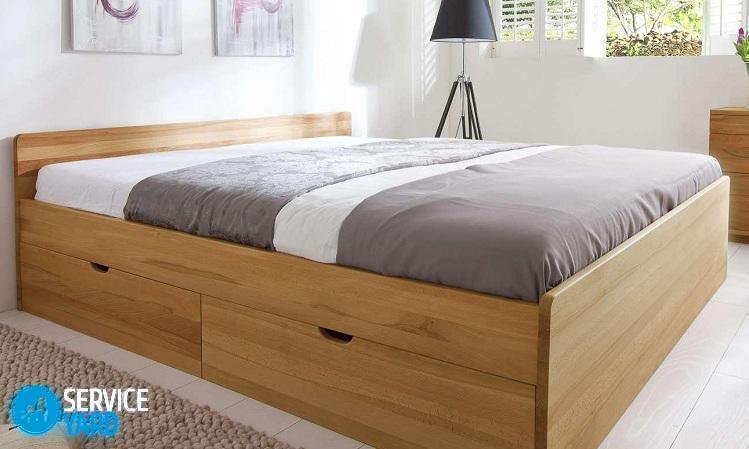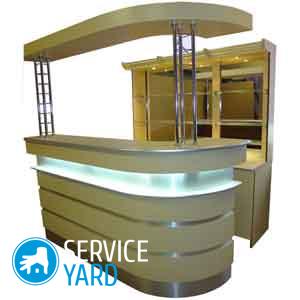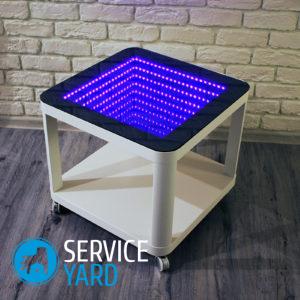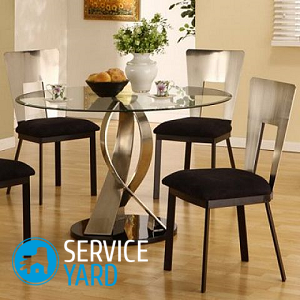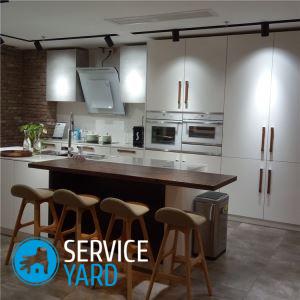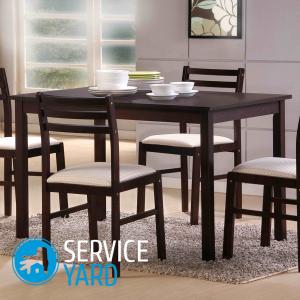Do-it-yourself bed

Surely, every person who likes to make furniture on their own at least once thought about making a bed. But many are stopped more significantly by the dimensions of this product, a lot of nuances in terms of selection of materials, fasteners and assembly. In fact, if there is a desire, then everything is quite feasible. In today's article, we will tell you how to make a bed with your own hands, which in your family will pass from generation to generation, will withstand any test.
to contents ↑Making a bed with your own hands is a reality or a waste of time?
Believe me, a home-made bed made of wood with your own hands will be much cheaper than buying the cheapest finished model in a store. It will take a lot of time - at least 7 days, because you have to take technological breaks.
We will make a bed of wood, that is, safe and environmentally friendly material. You can determine the design and shape of the headboard yourself, because everything here depends on your own imagination, not at all on the quality and parameters of the design itself.
But the main feature that this product will possess is the complete absence of joints visible to the eye - brackets, fastener heads. In the creation of the bed, we will apply some technological and design techniques of the wooden aircraft industry, which were borrowed from furniture makers many years ago. Using the principles described below, you can make not only a simple bed from an array with your own hands, but also other more popular options with drawers, catwalks, and even two-story ones.
to contents ↑Materials for making a bed
Take care in advance of the preparation of all the necessary lumber, so that later you do not encounter the problem of a lack of certain details.
Prepare the following materials:
- MDF with a laminate texture or valuable wood 2-3 cm thick for the preparation of the front elements of the product.
Important! If you do not intend to jump on the bed before bedtime, then it is quite possible to do with 16 mm thick material.
- Wood or plywood 1-2 cm thick for the manufacture of internal parts.
- A beam of 8-8.5 m in size 50 to 50 mm.
- Solid boards with a length of 2 m 100 to 30-40 mm.
- Boards for decking 20 lounges per 100 mm.
- Boards 1.6 m long or construction plywood 2 1.6 m.
to contents ↑Important! All lumber should be planed and trimmed. In principle, any kind of wood can be chosen. In addition to sawing and selecting grooves and quarters, no independent processing is required.
Fasteners
You will not need any expensive accessories in the form of confirmations, minifixes, eccentric regulators to assemble a bed with your own hands at home. But, nevertheless, the product will turn out in strength and durability no worse than store samples, and it will weigh much less. This can be achieved through the use of manufacturing technology with long interruptions. Furniture makers quickly collect products for sale, trying to comply with all quality standards as much as possible, and you can make a home-made bed slowly, which allows you to bring it to perfect condition.
Of the fasteners you will need:
- Self-tapping screws 5-6 mm, and the cheapest, black phosphated. Their length should correspond to the sum of the thicknesses of the parts intended for connection minus 1 cm. How much will be needed - you can independently calculate a little later, studying all the structures necessary for assembly.
- Steel corners with stiffeners.
- Nails 6-7 cm.
Important! Given that all connections are made by gluing, it is best to use phosphated self-tapping screws, since they have a slightly rough surface, and glue does not lie well on smooth shiny fasteners.
It is especially necessary to pay attention to the corners, namely:
- On the stiffener. It should be round and wide.
- On the surface of stamping and folding. They should be perfectly smooth.
to contents ↑Important! Remember that ripples and burrs are a sign of overtightened, raw, burnt metal. Corners with such defects are prone to cracking and fatigue for no apparent reason.
Determine the size of the bed
Have you decided to make a double bed with your own hands? Drawings and sizes, diagrams and projects, sketches presented on the Internet, for the most part indicate that the bed should have a width of 1.6 m and a length of 2 m.
Important! If desired, they can be increased to 2 and 2.4 m. But a larger bed is difficult to make using the most common structural materials and technological methods.
Ideal dimensions can be calculated as follows:
- The width and length of the bed are recommended to be calculated based on the standard sizes of a single bed - width 0.9 m, and a double - width 1.9-2 m. In this case, two people with the usual complexion can fit on it.
Important! If there is not enough space, you can reduce the width of one berth to 55 cm, but not less. In addition, in this case, it is imperative to make a side railing.
- The height of the bed’s surface varies between 35-55 cm (on top of the mattress), it all depends on the physique and height of the owner. If a person has shins longer than the hips, then he needs to make the highest possible bed.
- The height of the bed is distributed in this way: 18-33 cm on the mattress, 15-20 cm on the drawers, the remaining space is free space. The minimum size of the bedside space is 8 cm, it cannot be done less, otherwise the bed will begin to suffocate and exude miasma.
Which mattress is suitable for a makeshift bed?
When a person decides to make a bed out of wood on his own, the lion's share of the financial cost goes specifically to the purchase of a mattress. When constructing a bed with your own hands, the maximum of problems arises precisely because of it. Since everyone wants to relax in a high-quality and full-fledged manner, it is better to choose a good orthopedic mattress.
Features of laying the mattress
As a rule, it is simply placed in a recess formed between the sides of the sidewalls. So, if you plan to lay it as well, then the first thing you need to choose the right model, because even branded mattresses from the same batch may vary slightly in size. If you miss a little, it may simply not fit in the lodgement, or there will be a large gap, in other words, a dust collector around the entire perimeter of the bed.
Important! A small gap around the entire perimeter of the mattress should be present so that it is convenient to fill the sheet, but its size should not exceed 3-4 mm. When calculating the size of a makeshift bed, this must be taken into account.
Often during sleep, when cornering, we encounter a tree of sides, you will agree that there is nothing pleasant about this, more often even such a touch is painful. That is why the flooring of the bed is slightly raised to the upper level of the tsar and the bed itself is made over the entire width of the mattress. At the same time, the design is equipped with special clamps made of drywall, plywood, wood, so that it does not slip.
to contents ↑The basic elements of a homemade bed
If you look closely from the outside, such a bed will resemble a rectangular frame, consisting of two backs, sides, a headboard with a foot:
- Inside there is a supporting bar frame with drawbars and backs.
- Wide models may have additional stiffeners - spars.
- The bar frames are covered with a flooring made of plywood or boards, due to which an even plane is formed - a lodgement or a plank bed.
- The flooring must have openings for ventilation or cracks.
This information will be enough to make a bed with your own hands. Next, we consider in detail each component of the future design.
Pins and corners
Corners are the most loaded and responsible places in any bed. That is why all the parts in the corners are joined together twice: first - in planks with pins, and then - in quarters of the block frame.
Important! The holes for the pins must be made perfectly, so mark them up at the pre-assembly stage.
Back
The top of the back can be made any, at your discretion. But these recommendations will help you do your job easier:
- The transverse beam is attached to it with screws and glue.
- It must have cutouts for the spar mustache with a width of 4 cm and a depth of 2.5 cm.
- The inner edges of the cuts should be located at a distance of 4-5 cm - it all depends on what scraps the elements of lateral stiffness will be made of.
- If you want to make a soft back, then its thickness should be 4 cm. It is better to assemble it from two shields 2 cm thick, then glue the entire plane with a notched trowel.
- The width of the backrest should correspond to the width of the mattress plus twice the width of the king or the width of the mattress plus 1 cm.
Tsargi
Tsarga - T-shaped beam made of a 2-4 cm board and a fiftieth bar. Its design is quite simple:
- This element is assembled for self-tapping screws and glue.
- Boards and bars have the same length, since the option of the bed that we are considering does not require complex calculations and manipulations.
- It is not necessary to order the cutting of planks from the furniture makers - a planed edged board (forty or thirty), 15-20 cm wide, is quite suitable for this. It is first opened with mordant or stain. It is not painted on the inside to make the finished product easier to breathe.
Important! To simplify the work and save money, they often make the foot of the construction the same as the czars. In this case, it must be finished, namely, laminated or varnished.
Spar
Simply put, this is the base for the bed, which is fastened with clamps, the openings under them are chosen directly in the flooring of the bed:
- To make the design truly reliable, it is better to use 4 clips on the corners or 2 between the shelves of the spar.
- The mattress in it is not fixed at all in any way.
In a double bed, as a rule, three spars are made, which are made of 4 by 10 cm boards. Inserts of lateral stiffness are made from the remains of the same timber or board from the frame. Their length should be at least 4, while care must be taken to ensure their uniform distribution. At the ends of the shelves, special quarters of 2.5 by 5 cm are knocked out under the cutouts on the transverse frames of the frame.
to contents ↑Important! The bars of the frame and the top of the spar shelves should form one plane as a result.
Step-by-step bed assembly at home
Let's take a step-by-step look at how to make a bed with your own hands from all the elements and components that we have previously selected and studied.
Assemble the bed according to this step-by-step diagram:
- As soon as the backrest frame elements are ready (if you ordered their production in the furniture workshop), install them vertically, back them with drawers or stools. Impose the drawers, check the rectangularity of the frame diagonally. Wrap the assembly with the rope, then check the diagonals again, align the frame.
- Mark the places for the installation of the dowels that will connect the backs to the planks of the tsar.Inside, draw a pencil in the corners of the line from the boards to the backs, pre-mark the height - for each end you will need 2 pins.
Important! The distance from the top to the bottom is the distance between the clips, divided into two. That is, you need to divide the width of the board by 4, one quarter from the top and bottom.
- Remove the czars, drill holes at the ends of the boards. Lubricate the ends around the holes with the ends, open the backs a little, put the drawers in place, then squeeze the backs tightly. At this point, it is not necessary to check the squareness. Here you will immediately see where the response holes are needed.
- In the backs, select the holes, collect the base previously on the dowels of the backs or boards, glue the quarters of the timber. Simply put, drive the dowels into the ends of the boards with glue, lubricate the holes in the quarters and backs with them, dry them a little, and slightly push the tsars with a mallet so that they fit tightly.
- Now you need to fit the frame. To do this, put pieces of cardboard for packaging on the middle of its sides and corners, cover everything as tightly as possible with several turns of rope. Spread the coils evenly across the width of the planks of the planks, slip off the trim pipe or piece of wood on all sides. Verify the diagonality until the glue begins to harden. Level the frame, dry for several days.
- In the corners of the bar frame, drill holes for the dowels, install them on the glue. Try the spar in place, if necessary, adjust it. Lubricate his mustache with glue, cut reciprocal cuts in the bars, put in place, additionally fasten with steel corners. For each wing corner you will need 3 screws.
- Attach the flooring to the frame with nails and glue. To make a boardwalk, 20 boards with a size of 80 to 100 mm will be enough. You can use the canvas, but then the design will turn out to be heavier. It is better to immediately determine the thickness of the flooring, otherwise it will not work out correctly, calculate the location of the frame bars. To fix each board you will need 8 nails. If the flooring is made of plywood, then the nails are driven directly into the corners and into the spar mustache. Then, nails are driven along the entire perimeter and axes in increments of 8-12 cm.
- Wait a few more days, put the mattress.
The assembly of the bed is completed, you can begin to use it!
to contents ↑Stock footage
The bed is the most striking example of dialectics in the technical field. In fact, this seems to be a simple thing that hides a lot of tricks and nuances. But if you know them, you can even bring the simplest model to perfection.



